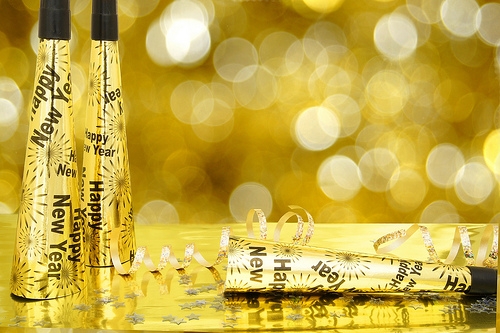January 16th, 2020

Molars are made up of canyons, caves, pits, and seemingly endless caverns that are a breeding ground for decay. The protective solution is a sealant. When done correctly, a sealant from Dr. Brad Skelton and Dr. Richard Kennedy of Fairfield Pediatric Dentistry can be most effective in preventing cavities.
A sealant is made up of composite (a plastic-like) material that contains bonding agents to seal to the edge of the tooth. Sealants placed on the chewing surfaces of back teeth block food from being trapped. The process in which a sealant is placed is quite precise and painless.
First the tooth is cleaned with a sodium bicarbonate (baking soda) spray. Then an acid etch is applied to “roughen up” the surface. No saliva is to touch the tooth. This will re-mineralize the area, then a repeat etching is needed. An alcohol-based liquid then dries out the area and it must remain completely dry. The sealant is placed and guided through all the caverns, pits, fissures, and grooves. It is then cured with a special light, which makes it a hard, plastic-like material.
Sealants can last for several years. It is wise to have them examined on a semi-annual basis. If there is a break in the sealant, a high risk for decay is common. If a sealant is damaged, repair is simple, painless, and quick to complete.
Who can benefit from sealants? Anyone! Children often receive sealants as routine preventive care. Adults with deep canyons with stained grooves on their teeth can also benefit from a sealant. The process is quick, painless, and does not require any anesthesia. It is an effective way to lower dental restorative costs.
An investment in dental sealants can reap great benefits as properly cared for teeth will remain cavity free. Our Fairfield or Oxford location is available to answer your questions so give us a call today!
January 9th, 2020

Sucking is a common instinct for babies and the use of a pacifier or their thumb offers a sense of safety and security, as well a way to relax.
According to the American Academy of Pediatric Dentistry, the majority of children will stop using a pacifier and stop sucking their thumb on their own between the ages of two and four years of age. Prolonged thumb sucking or use of a pacifier can have dental consequences and needs be taken care of sooner, rather than later.
Many dentists favor pacifier use over thumb sucking because it makes it easier for parents to control and even limit the use of a pacifier. If thumb sucking lingers, the same strategies used to break the baby from using the pacifier can be used for thumb sucking.
Precautions
- Try to find "orthodontically correct" pacifiers, as they may reduce the risk of dental problems.
- Never dip a pacifier in sugar or honey to calm the baby.
- Give your baby a bottle of water at bedtime, never juice.
Dental Complications
Long term pacifier use can lead to an assortment of dental complications including:
- The bottom teeth leaning inward
- The top teeth slanting outward
- Misalignment of the baby’s jaw
The risk of any or all of these things happening is greatly increased if thumb sucking and pacifier use is sustained after the baby’s teeth start to come in.
Breaking the Thumb Sucking and Pacifier Habit
Most toddlers and children will stop sucking their thumb or using a pacifier between the ages of two and four on their own. However, if intervention is necessary here are a few tips to help your child break the habit:
- Slowly decreasing the use of a pacifier can be effective for many children. This method does not work very well with thumb sucking.
- Thumb sucking can be more difficult to break. Dr. Brad Skelton and Dr. Richard Kennedy may recommend using an over the counter cream that you put on the child’s thumb; it doesn’t taste good and usually does the trick.
- Rewards can also help with the process.
- If these simple commonly used strategies do not work, there are oral devices that will prevent a child from sucking their thumb or a pacifier.
Talk to Dr. Brad Skelton and Dr. Richard Kennedy and our team, as we have many tricks up our sleeves that will be effective in breaking your child’s thumb sucking or pacifier use.
January 2nd, 2020

What better way for children to spend their time than cuddled up by the fireplace or out in the yard with a book in hand? Dr. Brad Skelton and Dr. Richard Kennedy and our team encourage you to inspire your child’s mind with a few great books. Sure it may be easy to put off reading when balancing a busy schedule, but reading is vital to kids’ brain development. Plus, reading is always fun!
This week, we thought we’d ask: What are you or your child reading? Do you have any suggestions for must-read books? Out of ideas for great reads? Ask us during your next visit, and Dr. Brad Skelton and Dr. Richard Kennedy and our team would be happy to provide a few suggestions. You may also ask a local librarian here in Fairfield or Oxford for some ideas.
Happy reading! Be sure to share your book picks or your all-time favorites with us below or on our Facebook page!
December 26th, 2019

Watching the clock tick down the final seconds until midnight, many of us- Fairfield Pediatric Dentistry included- feel nostalgic about the passing year and hopeful about the new one to come. New Year’s Eve is one of the most widely celebrated holidays in the world, with over-the-top celebrations taking place in dozens of countries. The Gregorian calendar, which is widely used in Western nations and around the world, was implemented in 1582. Since that time, December 31st has marked the final day of the year, with midnight heralding the beginning of a brand new year. In the United States, New Year’s Day is a public holiday; government offices, schools, public organizations, and many businesses are closed for the day. Ponder the following fun facts as you think about your plans for the holiday:
- Approximately one billion people watch the New Year’s Eve ball drop in Times Square, New York City. This televised event is one of the most iconic New Year’s celebrations in the world. For many years, watching the ball drop meant tuning in to Dick Clark’s Rockin’ New Year’s Eve, an iconic television special dear to the hearts of many viewers.
- The idea for the New Year’s Eve ball came about because of a citywide ban on fireworks. Before 1907, when fireworks became illegal in New York City, celebrations included an elaborate fireworks show. The large, glittering, illuminated ball was developed as an alternative. Although the first ball was heavy at 700 pounds, the modern New Year’s Eve ball is made of Waterford crystal and tips the scale at six tons!
- The top five New Year’s resolutions are: to lose weight, quit smoking, get a new job, return to school, or increase personal savings. However, approximately 88% of New Year’s resolutions fail. But don’t let that discourage you! Resolutions are most likely to succeed when they are clear, achievable goals. Setting out a concrete plan to achieve your resolution also boosts your chances of success.
- Eating black-eyed peas on New Year’s Day is said to bring good fortune in the new year. Collard greens, cabbage, and ham hocks are also considered lucky foods to enjoy. Just steer clear of the chicken or turkey dinners; eating poultry is a bad omen for the year to come.
Whether you plan to stay in Fairfield or Oxford, or head out into the crowds to watch the ball drop in Times Square, New Year’s Eve is a time to enjoy friends and family. Send your loved ones well wishes for the New Year, and look for that special someone to share a midnight kiss with for good luck!















 Website Powered by Sesame 24-7™
Website Powered by Sesame 24-7™